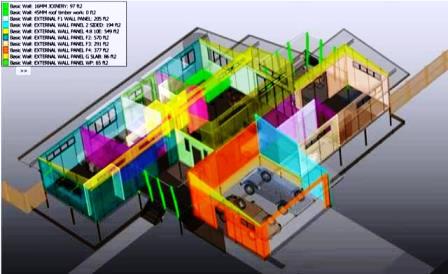

Printable PDF version
Subscribe to our newsletter
Data Centers
Pricing International Projects
Construction Prospects in the US & Europe
Construction
Management Specialists
111 Pine Street, Suite 1315
San Francisco, CA 94111
(415) 981-9430 (San Francisco office)
6518 Lonetree Blvd., Suite 164
Rocklin, CA 95765
(916) 742-1770 (Sacramento office)
9449 Balboa Avenue, Suite 270
San Diego, CA 92123
(619) 518-5648 (San Diego office)
8538 173rd Avenue NE
Redmond, WA 98052
(206) 571-0128 (Seattle office)
2063 Grant Road
Los Altos, CA 94024
(650) 386-1728 (South Bay office)
7083 Hollywood Blvd., 4th Floor
Los Angeles, CA 90028
(424) 343-2652 (Los Angeles, CA office)
78 Heathervue, Greystones
Wicklow, A63Y997, Ireland
+353 86-600-1352 (Europe office)
www.TBDconsultants.com
Data is the hot commodity these days, and in this article we look at the design of data centers, and how that design is changing.
Pricing International Projects
Preparing an estimate for a different region, especially at conceptual level, can be problematic. Labor rates can vary from region to region, as can material costs to a lesser extent. Changes in tax structure can vary, and differing weather and geographic features can affect productivity. When it comes to comparing international projects, these issues can get compounded and you can also have the problem of currency fluctuations.
Companies like R.S. Means, Spons, and many others, produce regional indices to reflect differences from one region or country to another. There are two common methods for preparing these, and with international projects all regions are normally converted to a single currency, such as the dollar.
The first method used for preparing such indices involves pricing the same project at pricing levels applicable to the different regions, nations or cities. This method appears to give a good direct comparison, but a particular building specification has to be selected for the model, and that model may not be the most applicable in different regions. For instance, the flexibility provided by a steel-framed building might be appropriate for a seismically active region, while the rigidity provided by a concrete-framed might be more appropriate for others. Also, the cost difference from region A to region B for steel-framed construction may not be exactly the same as the difference for concrete-framed construction. There can also be technologies or materials that are simply not available in some areas of the world, so substitutions within the model will sometimes become inevitable.

The second method used to produce these indices is to look at actual construction costs for different types of buildings in different regions around the world. An index might, for instance, look at the bid prices for office buildings in different cities around the world, or they might produce different indices for a range of building types, such as offices, high-rise residential, warehouse buildings, and retail. This may sound more accurate than the first method, but it suffers from the fact that you can end up comparing apples with oranges. As mentioned, different types of construction are likely to be the norm in different regions, and different services may have to be accommodated within the building cost. For buildings in Chicago, snow-melting equipment can be very important, but no one would think of incorporating that technology in San Diego. When comparing the costs of office buildings, in the US it is common for the initial construction to include for fit-out of the main circulation and core areas only, with the actual office areas being left as shell space; in other areas of the world, the complete building might be fitted out.

There can also be differences in the measurement of the floor area of a building, which can throw off comparisons by at least a few percentage points. In different regions, the enclosed area of a building might be measured to the exterior face of external walls, to the mid-point of the wall, or to the inner face. There can also be differences between how covered-not-enclosed areas are treated, and in what size of floor openings should or should not be deducted.
A comparison of available indices for a city in a foreign country can be a valuable starting point for estimating a project there, but as we can see it does have its problems. One way of overcoming these drawbacks is to carry out a market survey in the region, meeting with contractors, subcontractors, architects and project managers to gain a good feel for the level of pricing there. Another method is to reach out to estimators or quantity surveyors who are working in the region, and find someone who can review the estimate and provide feedback. Both methods can be very effective.
When bid prices for a project can commonly cover a spread of 30% or more, cost estimating can always be somewhat problematic, and estimating a project in a different region of the world can add to the problems. But there are ways and means of doing it.
Construction Prospects in the US & Europe
In this articles we look at the similarities and the differences in the construction markets in the Unites States and in Europe, and how market forces are affecting them.
Design consultant: Katie Levine of Vallance, Inc.